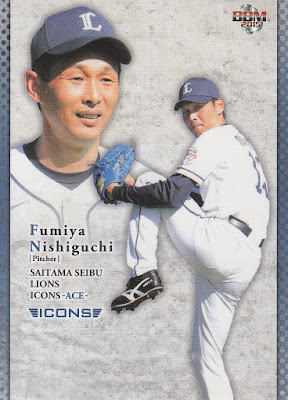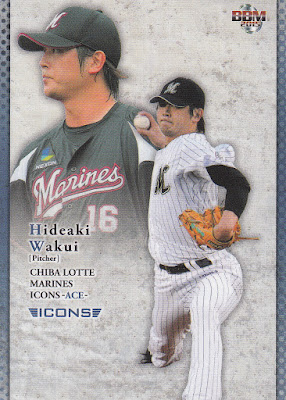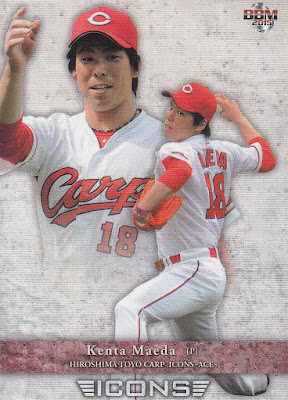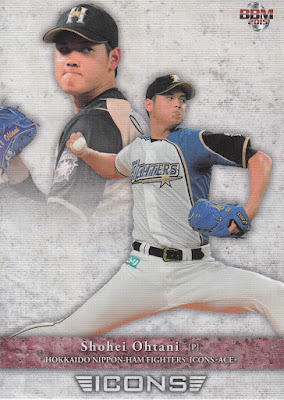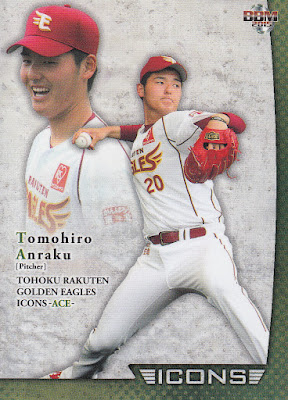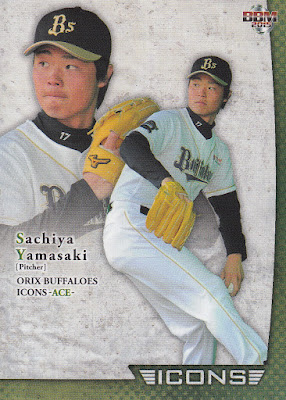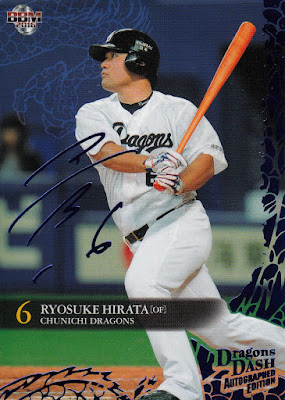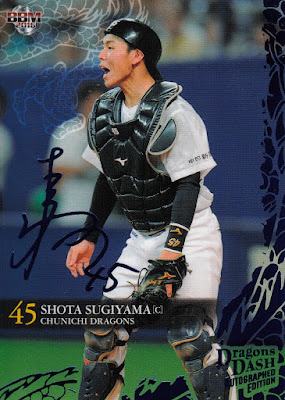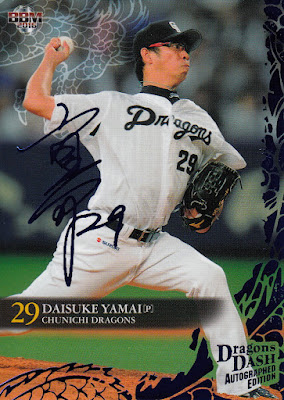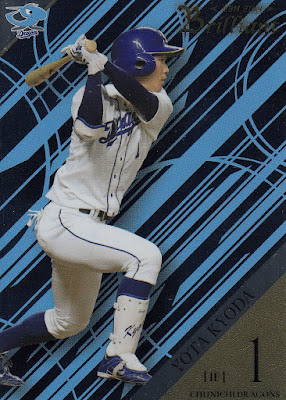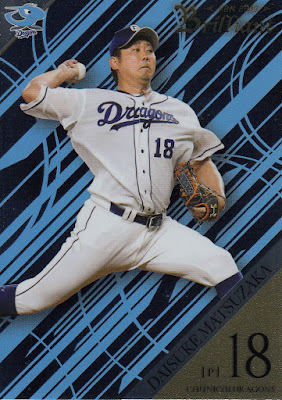The 1984 Summer Olympics were the first Olympics to include baseball as an official sport. It had previously been represented by single exhibition games in five earlier Olympics -
. But the 1984 Los Angeles games were the first time that an actual tournament would be played. Officially, however, it was still a demonstration sport and
no "official" medals would be awarded. To be clear, the players got medals but the medals did not count in the "official" medal count for the countries.
There were eight countries represented. Cuba was originally expected to participate but they took part in the Soviet led
that was basically payback for the West's boycott of the 1980 Moscow games after the Soviet invasion of Afghanistan in late 1979 so they were replaced by the Dominican Republic. The eight teams were split into two divisions. Japan would play in the Blue Division with Canada, South Korea and Nicaragua. The White Division consisted of the US, Taiwan, Italy and the Dominican Republic. All the games were played in Dodger Stadium.
Professional players were not yet permitted to play in the Olympics so Japan's 20 player roster was made up of a combination of seven collegiate players and thirteen players from the corporate leagues. The head coach was future Hall Of Famer Reiichi Matsunaga, coach of the Sumitomo Metal team of the corporate leagues and his two coaches were Yoshinobu Suzuki from Toshiba and Katsuo Komada from Hosei University. Here's the Japanese roster:
The format of the games was that each team would play the other three teams in its division in the first round. Following this round, the first place team of each division would play the second place team of the other division in the semi-final round. The winners of the two semi-final games would play in the final game (the gold medal game
although as I said no medals were actually awarded) while the losers would play in the "third place" (bronze medal) game.
Japan went 2-1 in first round, defeating South Korea 2-0 and Nicaragua 19-1 before losing to Canada 6-4. They finished first in their division, technically tied with South Korea but were awarded first since they had beaten the Koreans. They defeated Taiwan 2-1 in 10 innings in the semi-finals to move on to the final game against the undefeated Team USA.
Team USA was managed by USC coach Rod Dedeaux and featured an impressive roster of collegiate players, among them future major leaguers like Hall Of Famer Barry Larkin, Will Clark, Mark McGwire, Cory Snyder, Bobby Witt, BJ Surhoff and future Yomiuri Giant Shane Mack. Fresno State pitcher John Hoover, considered the ace of the staff, started the final game for the US while Japan countered with Atsunori Itoh. Team USA took an early lead with a run in the bottom of the third but Japan countered with two in the fourth and another in the top of the fifth before Katsumi Hirosawa broke the game open with a three run home run in the eighth. Team USA rallied to score a pair of runs in the ninth but couldn't get any closer. Japan won the game 6-3.
Here's a team photo swiped from
Wikipedia.
16 of the 20 players on the roster went on to play in NPB. Corporate league players Katsuyuki Fukumoto, Noburo Morita, Yasaushi Urahigashi and Yukio Yasuda never made the jump to the professional ranks. Here's a card and a blurb about each of the other 16:
 |
| 1993 BBM #308 |
At 19, Yukio Arai was the youngest member of the team. He had joined Nippon Oil after leaving high school and continued to play for them for a year after the Olympics before declaring for the draft. He was taken in the second round of the 1985 draft by the Swallows. He won the Central League Rookie Of The Year award in 1987, hitting .301 in his first full season at the
ichi-gun level. That was probably his best season but he got regular playing time with Yakult for the next eight seasons and made the All Star team in 1993. He was traded to the Kintetsu Buffaloes after the 1995 season and again to the Yokohama Baystars after 1997. He retired after the 2000 season and later coached for the Swallows, Giants and Fighters.
 |
| 1993 Tomy #251 |
Shinichi Furukawa was in his third year at Asia University when he played in the Olympics. He was drafted by the Lotte Orions in the fourth round of the 1985 draft and got into 96 games in his rookie season of 1986, hitting .274 with 16 home runs. He was expected to replace Hiromitsu Ochiai as the clean up hitter in 1987 (Ochiai had been traded to Chunichi in anticipation of him not getting along with new Lotte manager Michio Arito) but a broken wrist limit him to just 80 games in which he hit only .222. He played in 116 games in 1988 but only hit .236. His playing time tailed off after that, partly due to the arrival of Mitsuchika Hirai and Norifumi Nishimura's conversion to the outfield. He retired following the 1995 season and spent a couple of years coaching with Lotte.
 |
| 1992 BBM Nippon Series #S48 |
Shinji Hata was a two time Tokyo Big Six Best 9 winner at Hosei University before being taken in the second round of the 1984 draft by the Swallows. He spent the next couple years as the backup catcher to Yukio Yaegashi before becoming the starting catcher in 1988. He split the catching duties with Chikashi Nakanishi in 1989 and was forced to move to the outfield in 1990 when Atsuya Furuta joined the team. He had his best season in 1991 when he hit .292 with 16 home runs and made the All Star team. What was probably the highlight of his professional career occurred in Game Six of the 1992 Nippon Series when his home run in the bottom of the tenth gave the Swallows an 8-7 walk off victory and tied the Series against the Lions at three games apiece. His playing time diminished over the next few years and he was sold to the Hawks after the 1998 season. After one season in Fukuoka he was sent to the Chiba Lotte Marines and retired after the 2000 season. He has coached for the Marines, Dragons and Giants as well as the Gunma Diamond Pegasus of the Baseball Challenge League.
 |
| 1990 Lotte #107 |
Katsumi Hirosawa had been a star at Meiji University in the Tokyo Big Six league. He hit .351 with 18 home runs over his college career, winning three Best 9 awards. He was selected by three teams in the first round of the fall 1984 draft with the Swallows beating out the Fighters and Lions in the lottery for him. He almost immediately became the regular first baseman for the team in 1985 although he moved to the outfield in 1987 to make room for Bob Horner. He had a breakout season in 1988, hitting .288 with 30 home runs and 80 RBIs. His home run total dipped to 17 in 1989 but he started a streak of five straight seasons of at least 25 home runs in 1990 after moving back to first base. He left Yakult for the Yomiuri Giants as a free agent after the 1994 season, signing a five year contract. He moved back to the outfield in 1995 since the Giants had Hiromitsu Ochiai at first. He missed much of the 1996 season after breaking a bone (not sure which one) after being hit by a pitch. He came back strong in 1997 but the emergence of Yoshinobu Takahashi in 1998 severely cut into his playing time and he missed a lot of the 1999 season after dislocating a shoulder sliding while attempting to steal second. His contract with the Giants was up after the 1999 season and he joined the Hanshin Tigers. He didn't get a lot of playing time with the Tigers but he had a pinch hit home run in Game 7 of the 2003 Nippon Series off of Tsuyoshi Wada of the Hawks. At 41 years and six months he was the oldest player to ever homer in the Nippon Series (not sure if he still holds this record or not). It was his final at bat as he announced his retirement shortly after the Tigers lost the Series. He ended his career with 1736 hits and 306 home runs. He was an eight time All Star (1987-94) and was named to the Best 9 team four times (1988, 1990-91, 1993). He lead the Central League in RBIs in 1991 and 1993 and in Game Winning RBI in 1990 and 1992. He spent a couple seasons coaching for the Tigers in 2007-08 and has coached the Cambodian National team since 2011. I believe he was the last active player from the 1984 Olympic team.
 |
| 1996 BBM #33 |
Following the Olympics Akimitsu Itoh spent another year playing for Honda in the corporate leagues. He declared for the 1985 draft and like Hirosawa the year before the Swallows beat out two other teams (Hankyu and Lotte this time) in the lottery for his rights. He split time between the bullpen and the starting rotation in 1986 before going 14-11 as a starter in 1987. He was pressed into service as the team's closer in 1988 and went 18-9 with 17 saves. He was the first pitcher to ever lead the league in wins without starting any games that year. He also made the All Star team that year for the only time in his career. He moved back to the starting rotation in 1989 but a broken leg and shoulder issues limited him to only three games at the
ichi-gun level in 1990 and none at all in 1991. He came back strong in 1992 (going 7-5 with a 2.77 ERA to win the Comeback Player of the Year award) and went 13-4 with a 3.11 ERA in 1993. He spent most of 1994 as a starter but his numbers declined some and he spent the next couple seasons switching between the rotation and the bullpen. He suffered a broken right hand in 1996 and never really recovered from it, ultimately retiring following the 1998 season. He had two separate stints coaching for the Swallows after retirement - 1999 to 2007 and 2011 to 2015.
 |
| 2001 Upper Deck #91 |
Atsunori Itoh graduated from the Fukui Institute Of Technology in the fall of 1985, a year after the Olympics. He spent the next two seasons playing for Kumagai Gumi of the corporate leagues before declaring for the 1987 draft. He was taken by both the Fighters and Braves in the first round with Hankyu winning the lottery for him. He was the final first round pick of the Hankyu Braves. He threw a no-hitter with the
ni-gun team in 1988. With the
ichi-gun team he split time between the rotation and the bullpen his first few seasons but he was used as a starter for almost the entire season in 1992, going 8-8 and making the All Star team. He was traded to the Yokohama Baystars before the 1995 season but only got into 23 games with the top team over the next two seasons before he was traded to the Hanshin Tigers. He had a bit of a career renaissance with the Tigers making over 50 appearances a year out of the bullpen over the next five seasons. He especially excelled in 2000 and 2001 when he put up ERAs of 1.86 and 1.79 respectively. He developed back issues late in his career that limited him to only 20 games in 2002 and he retired at the end of that season. He was a coach for the Tigers from 2005 until he retired at the end of the 2019 season.
 |
| 1994 BBM #406 |
At 26 Terumitsu Kumano was the oldest member of the Olympic team who went on to play in NPB. He had been a third round pick of the Swallows out of Chuo University in 1979 but he decided to play for Japanese Musical Instruments (Nippon Gakki, later Yamaha) in the corporate leagues. After five season with them he opted to declare for the draft again in 1984 and was taken in the third round by the Hankyu Braves. His rookie season of 1985 was his best year as he hit .295 with 14 home runs and 21 doubles, making the All Star team and being elected Rookie Of The Year. He had another pretty good year in 1987, hitting .291 with 11 home runs but his numbers declined and he started losing playing time to younger players in first seasons after Orix bought the team from Hankyu as he was now in his early 30's. He was traded to the Yomiuri Giants for the 1992 season but had a dreadful year, hitting only .162 in 74 games, mostly as a pinch hitter and late inning defensive replacement. He spent most of 1992 with the Giants' farm team, only getting into 8 games at the
ichi-gun level and getting no hits. He returned to Orix for the 1994 season but spent the entire year with the
ni-gun team and retired at the end of the season. He coached for Orix from 1995-96 and has been a scout for several teams since then.
 |
| 1997 BBM #60 |
Kazutomo Miyamoto was drafted in the third round by the Giants in the 1984 draft just a few months after the Olympics ended. He made his
ichi-gun debut the following season, working exclusively out of the bullpen. Following his rookie season he was mostly a starter but he usually still had a number of relief appearances each year. He got the save in Game Seven of the 1989 Nippon Series when the Giants made an improbable comeback after being down three games to none to the Kintetsu Buffaloes. He threw an "immaculate inning" in 1994, striking out Yusuke Torigoe, Hideki Satoh and Kazuyoshi Tatsunami of the Dragons on just nine pitches. He suffered whiplash in a car accident the day after Opening Day in 1997 and retired after that season due to the injury. He's had a bit of an eclectic career since retiring as a player. He's been a TV personality and baseball commentator and released a single (or an album) called "All Or Nothing" with the help of his friend Natsuki Maeda of the band TUBE. He became a coach for the Giants in 2019.
 |
| 1991 BBM #95 |
Yoshihiko Morita had spent four years playing for the Kagashima Railway team in the corporate leagues by the time the Olympics rolled around. He had had an opportunity to go to NPB in 1982 when he was drafted in the sixth round by the Nankai Hawks but he opted to remain with Kagashima. He played an additional year for them before declaring for the 1985 draft. He was taken by the Lotte Orions with the third pick and made his
ichi-gun debut with them the following season. He was primarily a utility infielder and split most seasons between the top team and the farm team. He spent his last few seasons with Lotte at the
ni-gun level and retired following the 1995 season.
 |
| 1987 Takara Hawks #21 |
Yoshiaki Nishikawa was in his third year at Hosei University (and a teammate of Shinji Hata's) when he played on the Olympic team. He was taken in the first round by the Nankai Hawks in the 1985 draft although he actually was not the Hawks' first pick - they had originally picked Kazuhiro Kiyohara (along with five other teams) but lost him in the lottery to Seibu so they settled for Nishikawa. He had a promising rookie season in 1986, going 10-10 with an ERA of 3.89 and making the All Star team but that was the best year of his career. He threw a no-hitter in the preseason in 1988 and then took a no-hitter into the eighth inning against Seibu on Opening Day before losing both the no-hitter and the game. He was the starting pitcher in Nankai's final game in Osaka (well, Nankai's final game period) in October of that year. He was traded to the Hanshin Tigers prior to the 1991 season and retired after spending the entire 1992 season with the farm team.
 |
| 2015 Epoch Tigers Nippon Champions 1985 #23 |
Munehiko Shimada had the unique experience of being taken in the same draft by the same team as his younger brother. The elder Shimada was the fourth pick of the Tigers in the 1984 draft while Akihiro was Hanshin's first round pick (beating out the Carp in the lottery for his rights). Munehiko vied with Katsuhiko Kido for the Tigers' starting catcher job over the next few years but he lost out due to his poor hitting. His big claim to fame was homering in a pinch hitting appearance in Game Three of the 1985 Nippon Series against Osamu Higashio. He was the first rookie to homer in his first Nippon Series at bat. As it turned out, that was his ONLY Nippon Series at bat as he pulled a
Jim Mason. Akihiro was a pitcher and the two brothers were the starting battery for a game in April of 1986. Munehiko remained with the Tigers though 1992 before retiring although his final season was entirely with the farm team. He coached for the Tigers after retirement and I believe is now the Dragons' official scorer.
 |
| 1989 Calbee #79 |
Second baseman Kozo Shoda was the leadoff hitter for the Japanese Olympic team and was the second round pick of the Carp in that fall's draft. He spent his first season or so with the Carp learning how to pinch hit and became the team's regular second baseman midway through the 1986 season, just in time to play in that fall's Nippon Series. He won the Central League batting title with a .333 average in 1987, becoming both the first switch hitter to do it as well as the only winner to ever do it without hitting a home run. He hit .340 to repeat as batting champion in 1988 and won the stolen base title with 34 steals in 1989. Six of those 34 steals came in one game on October 15th as Shoda basically decided to steal enough in one of the final games of the season to pass Kenji Tomashino of the Swallows who had already finished the season with 32 steals. Shoda remained the starting second baseman for the Carp until early in the 1997 season and he retired after the following season. He was a five time All Star (1987-90, 1993), a two time Best 9 winner (1988-89) and a five time Golden Glove winner (1987-91). He was chairman of the Japan Professional Baseball Players Association for three years from December of 1995 until December of 1998. He's spent the time since his retirement as a player coaching for the Carp, Kintetsu, the Tigers, and Orix as well as SK, Hanwha and Kia of the KBO.
 |
| 1992 BBM #282 |
Kazuaki Ueda was the fourth Tokyo Big Six player on the Olympic team. He was in his final year with Keio and had hit 12 home runs during his collegiate career and won a Best 9 award. He was the first round pick by the Giants in the 1984 draft (although like Nishikawa he was a consolation first pick after Yomiuri lost out on Mitsukuni Takeda). He had a pretty undistinguished career with the Giants, hitting just .202 in 203 games between 1985 and 1993. He retired following the 1993 season and spent some time coaching for the Giants in 2001-05 and 2011-12.
 |
| 1999 Calbee #258 |
Yutaka Wada spent his entire 17 year NPB career with the Hanshin Tigers after being taken by them in the third round of the 1984 draft. He made his
ichi-gun debut in 1985 but it wasn't until 1988 that he became a regular with the top team. Oddly enough he seems to have switched between being the Tigers' regular shortstop and second baseman several times throughout his career. He led the Central League in hits with 161 in 1993. He made the All Star team seven times (1989, 1992-1996, 1999), won two Best 9 Awards (1992, 1994) and three Golden Glove Awards (1992-94). He retired at the end of the 2001 season with 1739 hits. He was the last active member of the Hanshin Tigers Championship team of 1985 although he did not play in the Series that year. He became a coach for the Tigers in 2001 while he was still playing and remained one after he retired. He was manager of the Tigers from 2012 to 2015. The highlight of his managerial tenure was the team's second place finish in 2014 when they beat the Giants in the Climax Series finals and went on to the Nippon Series where they lost to the Fukuoka Softbank Hawks.
 |
| 1988 Takara Dragons #19 |
Akira Yonemura had graduated from Chuo University in 1981 and spent three years playing for Kawai Musical Instruments in the corporate leagues. He was taken in the fifth round of the 1984 draft by the Chunichi Dragons. He worked mostly out of the bullpen in his seven year career although he made 12 starts in 1988. His most memorable feat came with the bat rather than on the mound however as he hit a home run in his first ever at bat, becoming the 21st player (and third pitcher) to do so. He retired following the 1991 season and has spent time as a scout since then.
 |
| 2013 BBM Tigers Legends #81 |
Yasuo Yoshida had already played four seasons for Mitsubishi Motors Kawasaki of the corporate leagues before playing in the Olympics. The Giants apparently promised they would draft him in the first or second rounds of the 1984 but they didn't do it. After the draft they attempted to sign him as an undrafted player but he refused and returned to Mitsubishi for another season. He was taken by the Tigers in the fifth round of the 1985 draft. He ended up having a 12 year career with the Tigers but he only appeared in 132 games with the
ichi-gun team during that time. Most of those games came in 1989 and 1990 when he competed with his Olympic teammate Munehiko Shimada for the backup catcher position. He spent the entire season with the farm team four times during his career. He retired following the 1997 season and coached for the Tigers until after the 2015 season.















































